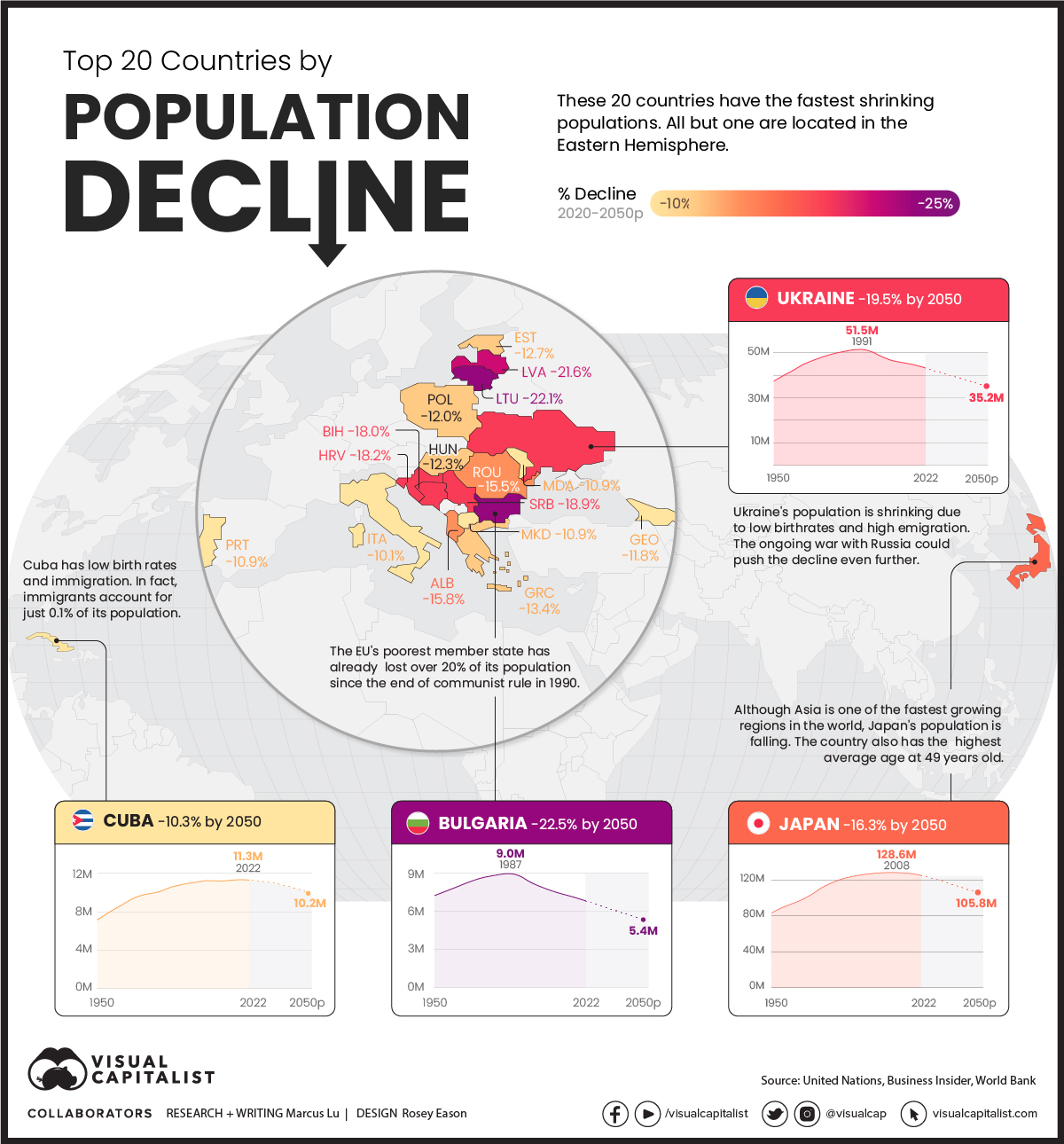Expanding on and contextualizing some of the comments in July 28's "Are Ukrainian Farmers an Endangered Species?".
First up, Visual Capitalist:

....MUCH MORE, click through for larger image and top 20 ranking details.
And from journo/history nerd Ed West's Wrong Side of History substack, March 10:
'Children of Men' is really happening
Russia is dying. In just the first week of Putin’s war, the country lost somewhere between 2,000 and 6,000 men, according to western sources, an immense and needless tragedy for the poor families left behind to grieve.
Whether those in the Kremlin will weep for them, they must shudder at the thought that in the average week the country loses another 2,000 through population decline, a rate that rose to 20,000 during Covid. But even in normal periods, Russia is now shrinking by more than 100,000 people a year and with no prospect of raising fertility above the 2.1 total fertility rate (children-per-woman) replacement threshold.
The incomprehensible thing about this war is that Russia is not a belligerent young nation in need of expansion; it is not filled with frustrated young men hoping to assert themselves in conflict, as with Syria, Afghanistan or the world’s other conflict zones; it is already elderly, ageing quickly and in some parts heading for oblivion. Some 20,000 Russian villages have been completely abandoned in recent years, and 36,000 others have fewer than ten inhabitants left and will follow them soon. A third of land once farmed in the former USSR has now been abandoned.
If the Russians turn out to have no stomach for this fight, it will probably be for the simple fact that the country does not have enough men to spare. The majority of those poor young men killed for Russia’s honour will be their mother’s only son, in many cases their only child; this will make the impact of Putin’s crimes even more devastating for its victims.
For the same is true of Ukraine; indeed its rate of population decline is even worse. Across huge swathes of the planet, in an ‘infertile crescent’ from Spain to Singapore, the population is ageing quite rapidly, and about to begin a steep decline — a real life Children of Men that is the subject of a new book, Tomorrow’s People by Paul Morland.
Morland’s previous work The Human Tide was a fascinating look at the political and cultural impact of demography throughout history. His follow-up charts the world of the 21st century, and is a similarly enjoyable and informative read; although ‘enjoyable’ might not be quite the appropriate word, for the future in many ways looks bleak, and in some countries, that future is already the present.
The upside is that — and this is admittedly a strange time to suggest it — the world is going to be a lot less violent. Describing a holiday in Catalonia around the time of that province’s comical attempts at independence in 2017, Morland wrote: ‘As I sat in one of Portbou’s squares, I reflected on why the referendum had become a footnote in history rather than the trigger for violent conflict. I looked around at the grey-haired locals enjoying the October sunshine and sipping cups of black coffee. They were far too old to take up arms and march in the streets, enraged by political injustice.’ He contrasts this with the youthful tension he felt in Israel on the eve of the First Intifada, a Palestinian population dominated by teenagers about to explode in violence.
In recent years we have benefited from what has been termed the Pax Americana Geriatrica. Most wealthy countries have median ages of over 40, and middle-aged people don’t like starting fights. We have responsibilities and worries, our frontal-lobes have made us cautious, and our testosterone levels are in terminal decline.....
....MUCH MORE